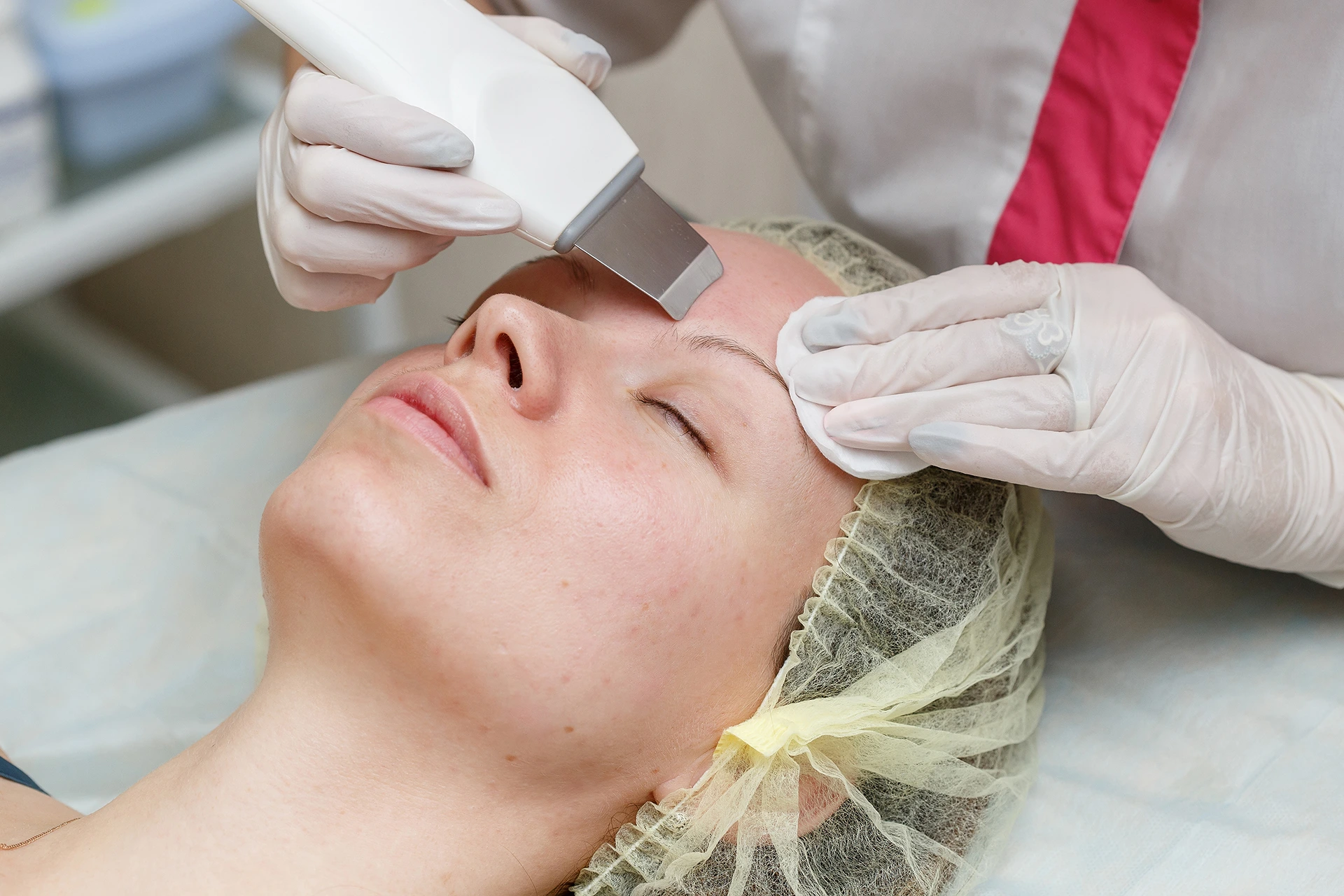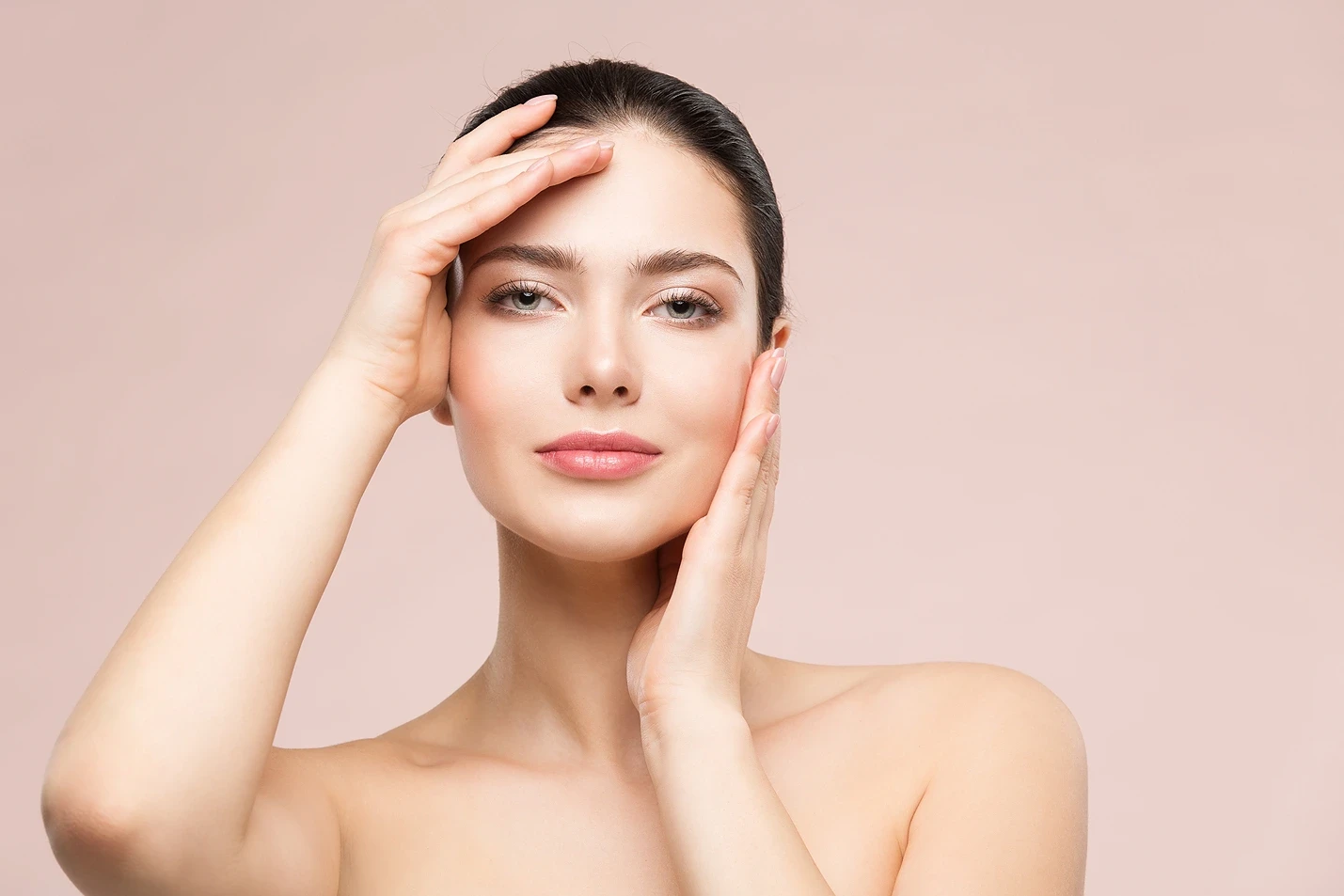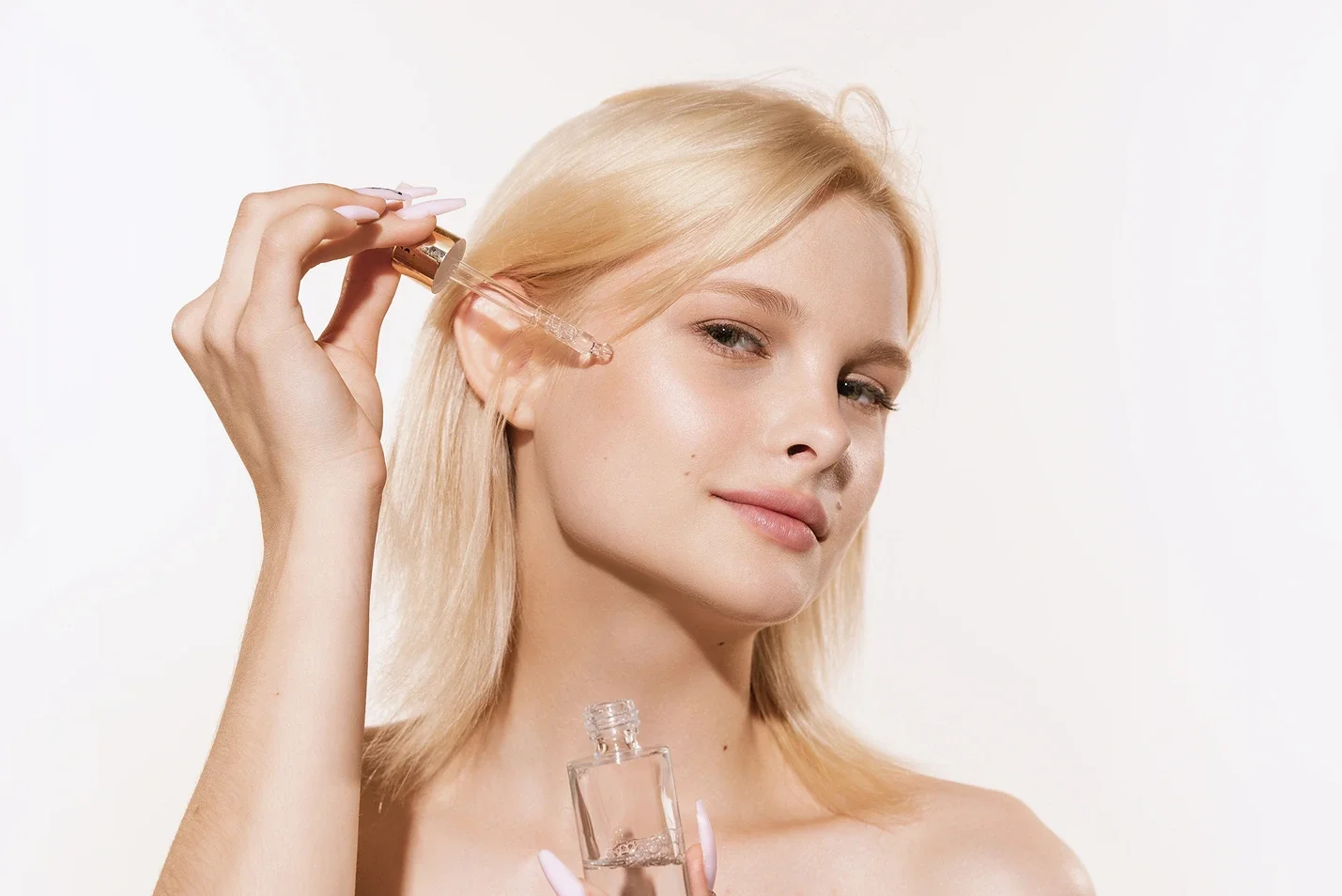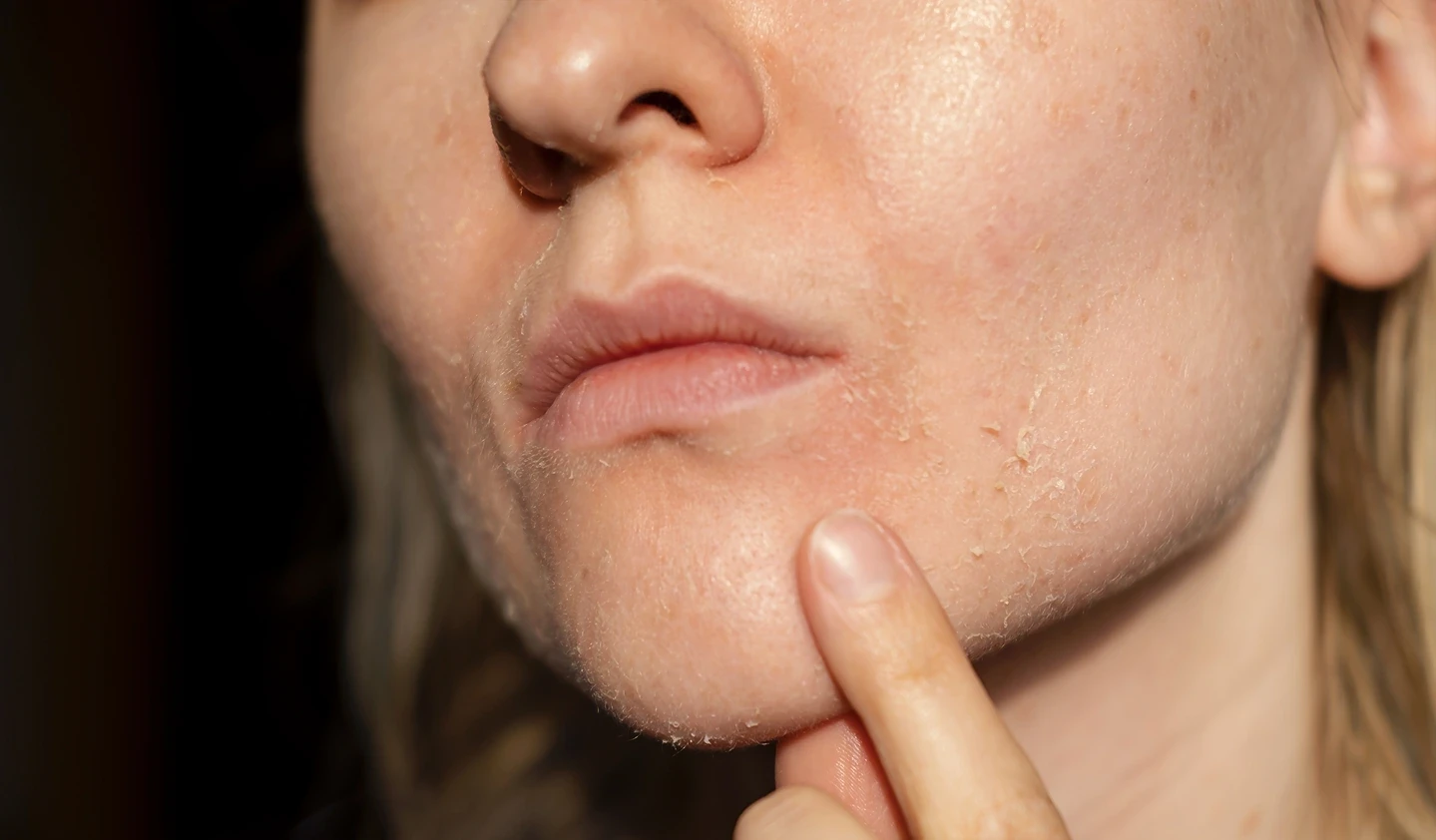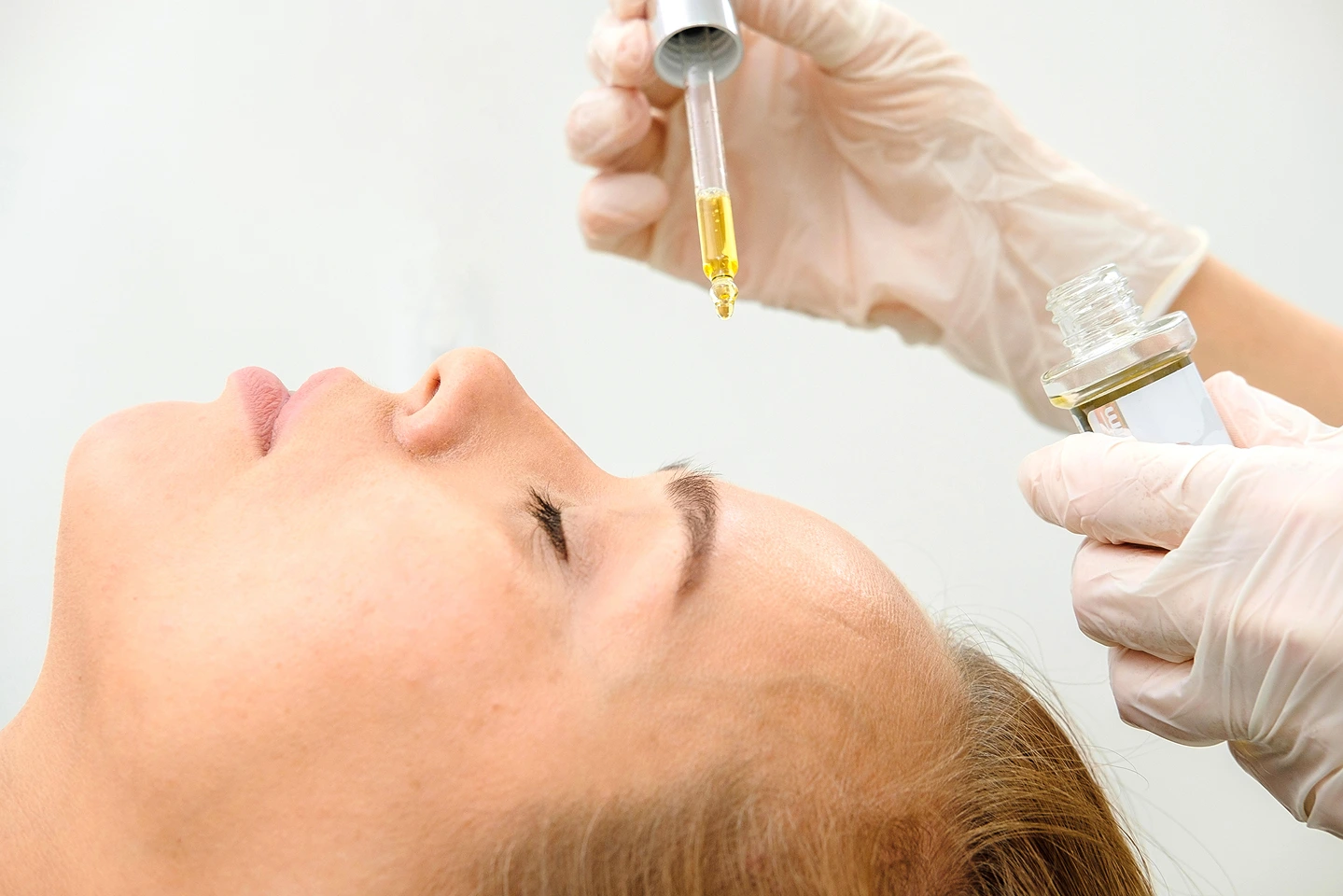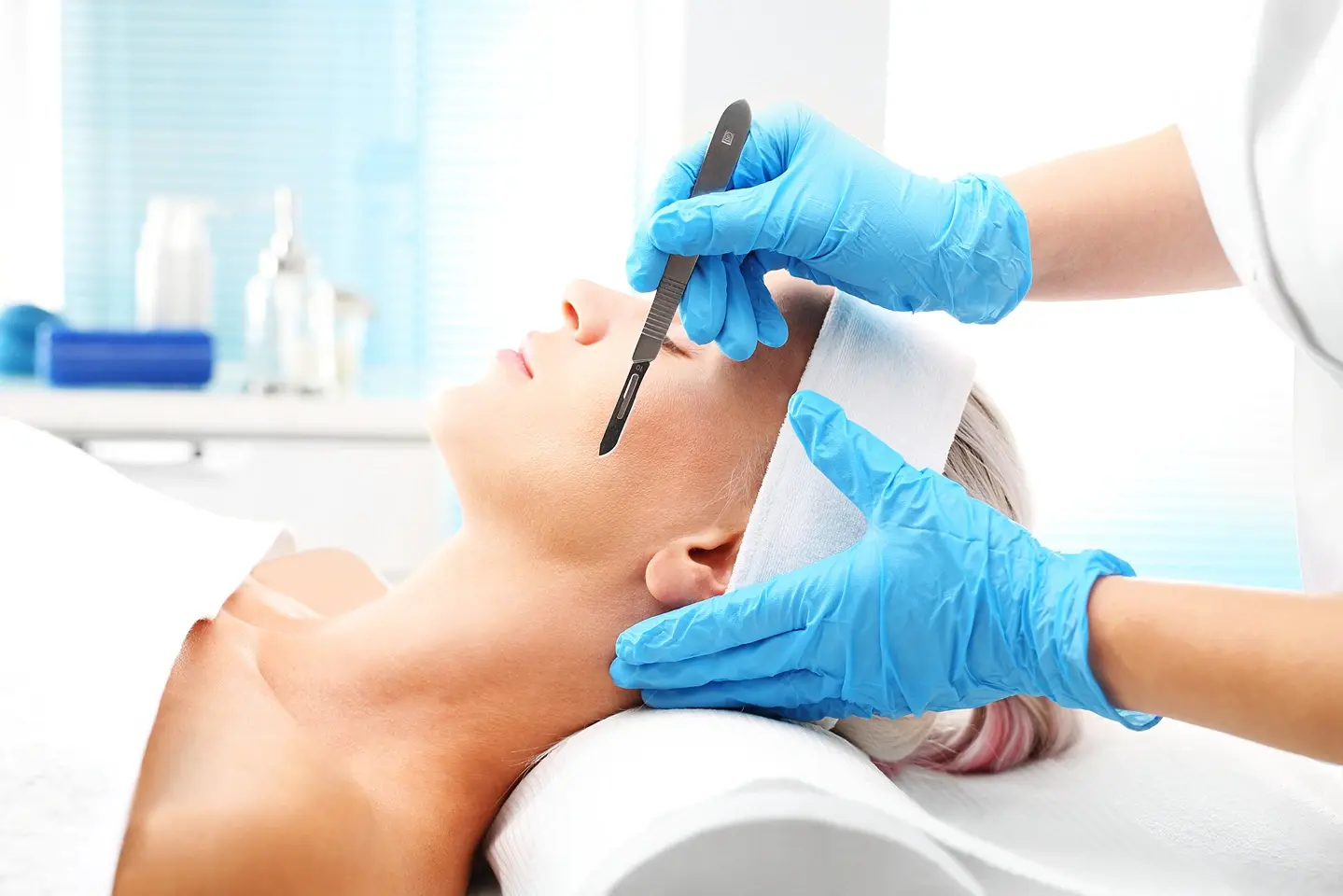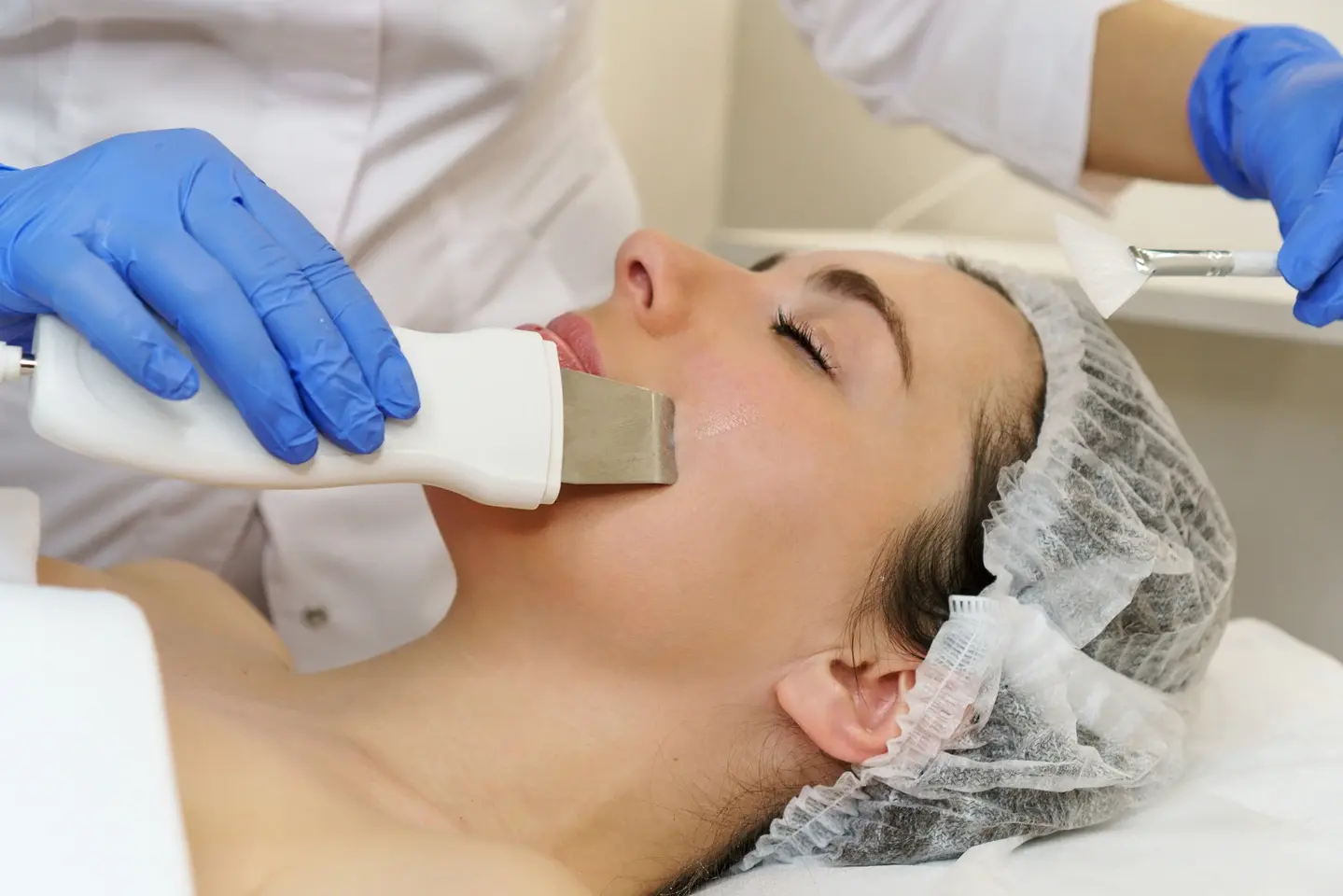Discover the best tips for banishing post-dermaplaning bumps. Say goodbye to skin irritation with our expert advice.
Dealing with post-dermaplaning bumps? Wondering if there’s a way to bid them farewell? You’re in the right place.
After dermaplaning, those pesky bumps can sometimes make an unwelcome appearance. But fear not, we’ve got you covered.
In this guide, you’ll discover everything you need to know about getting rid of those bumps and reclaiming your smooth, radiant skin.
From understanding why these bumps occur to practical tips for prevention and treatment, we’ve got your back.
So, let’s dive in and say goodbye to those bumps once and for all.
What is Dermaplaning?
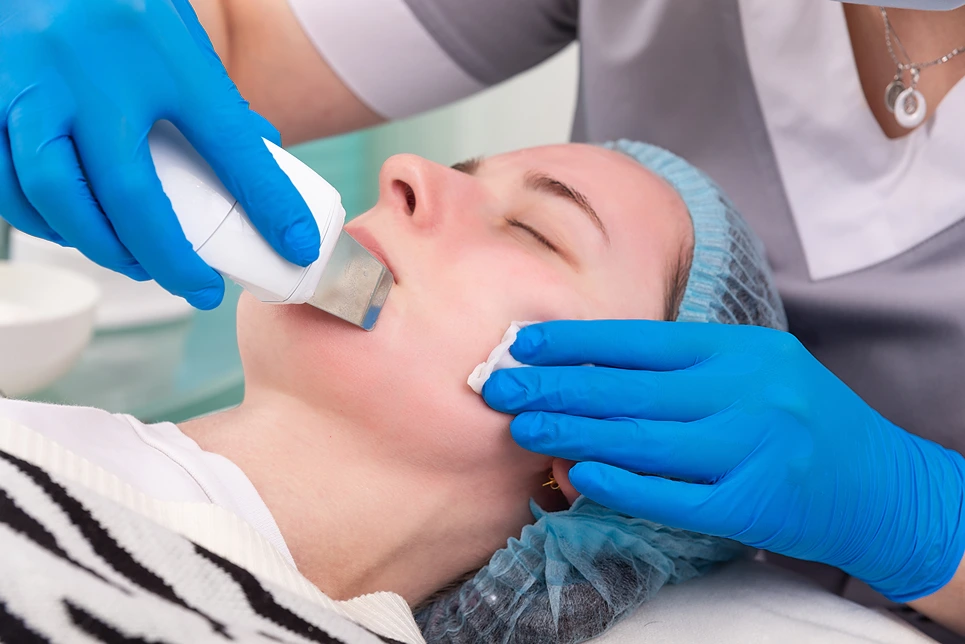
Dermaplaning is a popular exfoliating treatment that involves using a surgical scalpel to remove dead skin cells and peach fuzz from your face. This process helps to improve the skin’s texture and tone, and it can also make your skin look brighter and smoother.
In addition to exfoliation, dermaplaning also allows for better product penetration and makeup application.
Benefits of Dermaplaning
One major benefit of dermaplaning is that it effectively removes the top layer of dead skin cells and fine vellus hair, leaving your skin smoother and brighter. This exfoliation after dermaplaning can help prevent ingrown hairs and razor burn, making it a great option for soothing irritated skin.
Additionally, dermaplaning allows for better product absorption, giving you a more even complexion and a healthy glow.
Is It Normal To Breakout After Dermaplaning?
If you notice breakouts after dermaplaning, it’s important to understand that this can be a common occurrence due to the removal of dead skin cells and potential exposure of clogged pores. Here’s what you need to know:
- Clogged Pores: Dermaplaning can sometimes expose existing clogged pores, leading to breakouts.
- Sensitive Skin: Some individuals with sensitive skin may experience post-dermaplaning bumps.
- Treatment Options: Over-the-counter treatments can help, or seek professional help for persistent dermaplaning bumps.
Normal side effects of Dermaplaning
It’s important to be aware of the normal side effects that may occur after dermaplaning.
Breakouts, irritation, dryness, and minor cuts are some of the common side effects that you may experience.
Knowing what to expect can help you take the necessary steps to manage and minimize these effects.
Breakouts
Experiencing breakouts after dermaplaning is common and can be managed with proper skincare. To get rid of bumps after dermaplaning, consider these tips:
- Use gentle, non-comedogenic products to avoid further irritation.
- Try natural remedies such as aloe vera or tea tree oil to soothe the skin.
- Avoid heavy makeup if you have dermaplaning bumps to prevent clogging pores.
Irritation
Manage irritation after dermaplaning by employing a gentle skincare routine and using non-comedogenic products to prevent further discomfort.
To soothe irritated skin, avoid harsh exfoliating products and opt for gentle cleansers and moisturizers. Look for products with calming ingredients like aloe vera, chamomile, or oat extract.
Avoid sun exposure and use sunscreen to protect your skin.
Following these skincare tips can help minimize irritation and promote skin healing after dermaplaning bumps.
Dryness
Combat dryness after dermaplaning by incorporating a hydrating serum into your skincare routine. Look for products with hyaluronic acid to boost moisture levels in your skin.
Consider using a DIY face mask for dermaplaning bumps, such as a honey and yogurt mask, to soothe and hydrate your skin.
If dryness persists, consult a dermatologist to address any concerns and receive personalized skincare recommendations.
Minor cuts
To address minor cuts after dermaplaning, apply gentle pressure with a clean cloth to stop any bleeding.
Once the bleeding has stopped, cleanse the area with a mild cleanser and apply an antibiotic ointment to prevent infection.
Here are some tips to prevent and address minor cuts:
| Preventing Dermaplaning Bumps | Treating Skin Irritation |
| Use a sharp, clean blade | Apply aloe vera gel |
| Avoid excessive pressure | Use a gentle, non-abrasive moisturizer |
What Causes Bumps After Dermaplaning?

After dermaplaning, bumps can occur due to the removal of dead skin cells and vellus hair from the skin’s surface.
If a chemical peel is performed after dermaplaning, it can lead to skin irritation and potential bump formation.
Acne breakouts and active acne may also be exacerbated by dermaplaning. Sun damage and sun exposure can also contribute to bumps on the skin.
Dead Skin Cells
Exfoliating dead skin cells before dermaplaning can help prevent bumps and ensure smoother results.
To tackle small red bumps after dermaplaning, consider the following tips:
- Allow bumps to heal naturally, as they typically disappear within a few days.
- Use gentle, non-comedogenic skincare products to avoid clogging pores.
- Schedule regular dermaplaning sessions to maintain smooth skin and prevent future bumps.
Vellus Hair
Gently exfoliating vellus hair before dermaplaning helps prevent bumps and ensures smoother results.
Vellus hair, also known as peach fuzz, can become trapped under the skin after dermaplaning, leading to irritated skin and bumps.
To get rid of bumps, use gentle exfoliation and products containing benzoyl peroxide to prevent ingrown hairs.
Tips to Prevent Bumps After Dermaplaning
- Gently exfoliate vellus hair before dermaplaning
- Use products with benzoyl peroxide to prevent ingrown hairs
- Avoid over-exfoliating, as it can lead to irritated skin
- Keep skin moisturized to promote healing
Chemical Peel
To prevent bumps after dermaplaning, consider incorporating a chemical peel into your skincare routine to address any residual vellus hair and promote smoother skin texture. Here’s how a chemical peel can help:
- Exfoliation: Chemical peels can remove dead skin cells and unclog pores, preventing bumps and breakouts.
- Hair Removal: They help dissolve any remaining vellus hair, reducing the risk of irritation.
- Smoother Texture: Chemical peels promote a more even and refined skin surface, minimizing the likelihood of post-dermaplaning bumps.
Acne Breakouts and Active Acne
Are you experiencing acne breakouts or active acne after dermaplaning? It’s not uncommon for the skin to react this way, especially if your skin is prone to acne.
The process of dermaplaning can irritate the skin, leading to the development of whiteheads after dermaplaning.
To address this, consider using gentle, non-comedogenic products to get rid of bumps after dermaplaning at home. Benzoyl peroxide on dermaplaning bumps can also be effective in managing the breakout.
Sun Damage and Sun Exposure
Excessive sun exposure can exacerbate bumps and irritation after dermaplaning. To prevent sun damage and reduce the risk of worsening your skin condition, consider the following:
- Apply a broad-spectrum sunscreen with at least SPF 30 before going outdoors.
- Avoid prolonged sun exposure, especially during peak hours.
- Use skincare products containing benzoyl peroxide to help manage whiteheads and maintain clear, healthy skin.
How to Prevent Bumps After Dermaplaning
To prevent bumps after dermaplaning, start by preparing your skin before the treatment. Avoid putting harsh products on your face afterward, and steer clear of direct sun exposure.
Refrain from using hot water on your face and booking other facial treatments for at least two weeks.
Prepare the Skin Before Treatment
To prepare your skin before dermaplaning treatment, follow these steps to ensure your skin is ready for the procedure:
- Cleanse your face thoroughly with a gentle, non-abrasive cleanser to remove any makeup, dirt, and oils.
- Gently exfoliate to remove dead skin cells and prevent whiteheads.
- Apply a soothing moisturizer to keep the skin hydrated and prevent irritation.
- Avoid using any harsh products that may cause further bumps or irritation.
What Should You Not Put On Your Face After Dermaplaning
After dermaplaning, be mindful of what you put on your face to prevent bumps and irritation. Avoid using harsh products that can cause further irritation, such as benzoyl peroxide or heavy makeup.
Opt for gentle, non-comedogenic moisturizers and serums to keep your skin hydrated without clogging your pores. Here’s a helpful guide on what to avoid after dermaplaning:
| Avoid | Why | Alternatives |
| Benzoyl Peroxide | Can cause irritation and dryness | Gentle, non-comedogenic moisturizers |
| Heavy Makeup | May clog pores and cause breakouts | Lightweight, mineral-based makeup |
| Harsh Exfoliants | Can lead to further irritation | Gentle, chemical exfoliants |
Don’t expose your skin to the sun
Regularly avoid exposing your skin to the sun after dermaplaning to prevent bumps and irritation. To safeguard your skin, follow these tips:
- Apply sunscreen with at least SPF 30 before going outside.
- Seek shade or wear protective clothing to minimize sun exposure.
- Use a wide-brimmed hat to shield your face from direct sunlight.
Protecting your skin from the sun is essential for maintaining its health after dermaplaning.
Don’t use hot water on your face
Using hot water on your face after dermaplaning can exacerbate bumps and irritation. Stick to lukewarm or cool water to prevent further skin irritation.
Here are some alternative tips to help soothe your skin:
| Tip | Description | Benefits |
| Use a gentle cleanser | Cleanse your skin with a mild, non-abrasive cleanser to avoid aggravating bumps | Prevents further irritation |
| Apply a soothing moisturizer | Moisturize your skin with a gentle, fragrance-free moisturizer to calm irritation | Hydrates and soothes the skin |
| Use ice to reduce inflammation | Gently apply ice wrapped in a cloth to reduce redness and inflammation | Helps to soothe and calm irritated skin |
Don’t book other facial treatments for two weeks
To prevent bumps after dermaplaning, avoid booking other facial treatments for at least two weeks. Booking other facial treatments too soon can lead to skin irritation, whiteheads, and an increased risk of developing bumps.
Give your skin time to heal and recover from dermaplaning before introducing other treatments. If you notice any bumps or irritated areas, use benzoyl peroxide or ice to soothe and reduce inflammation.
Don’t use harsh or abrasive cleansers
Avoid harsh or abrasive cleansers immediately after dermaplaning to prevent skin irritation and bumps.
Opt for gentle, non-abrasive cleansers to cleanse your skin post-dermaplaning.
Using harsh products can further irritate the skin, leading to bumps and redness.
Look for cleansers that contain soothing ingredients like aloe vera or chamomile to calm any potential irritation.
This simple step can help you prevent bumps after dermaplaning and maintain a smooth, clear complexion.
Schedule a Consultation with CosMedic LaserMD
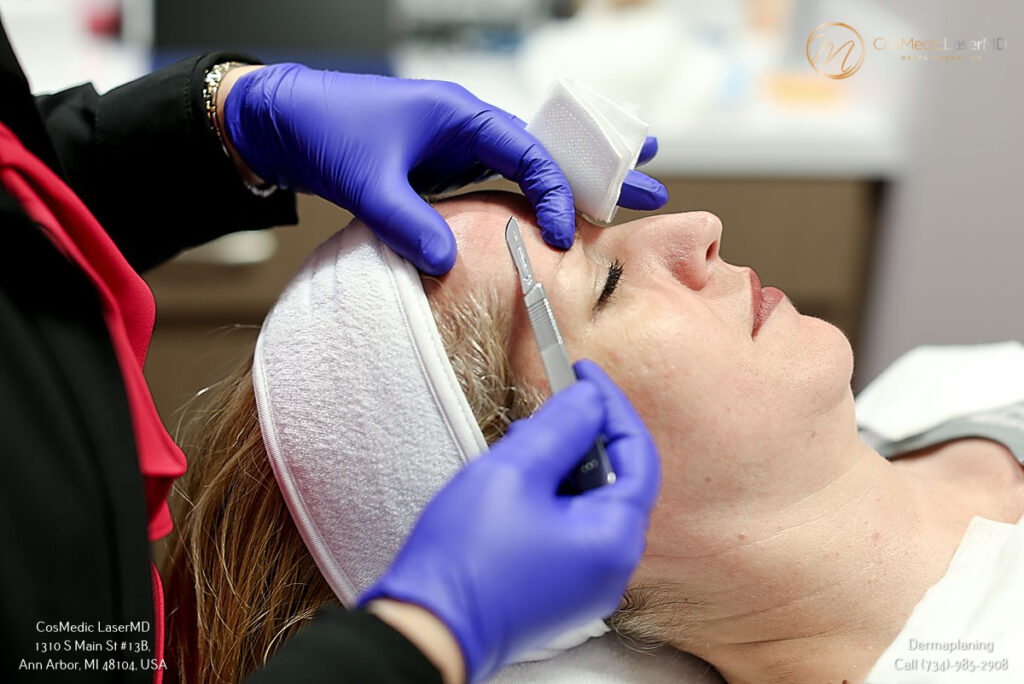
So, now that you know what dermaplaning is and why bumps may occur after the treatment, you can take steps to prevent and treat them.
By following the proper aftercare and using gentle skincare products, you can minimize the risk of developing bumps and enjoy the smooth, radiant skin that dermaplaning can provide.
Consult with CosMedic LaserMD today if you have any concerns or persistent issues.

